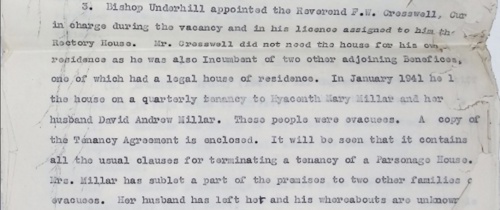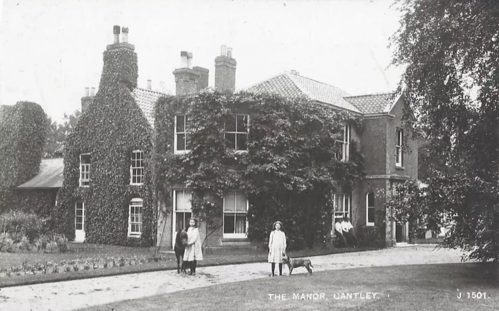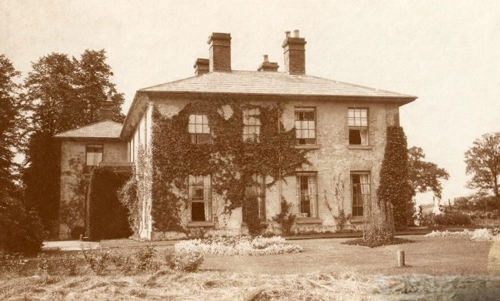War, Peace, and the Country House
Country houses have always stood at the crossroads of personal and national history. During times of conflict, these grand homes often took on new roles.
War, Peace, and the Country House
by Kelly Morrison, Pursing The Past.
Country houses have always stood at the crossroads of personal and national history. During times of conflict, these grand homes often took on new roles - becoming sanctuaries, rallying points, and places where communities came together in both hardship and celebration.
Through professional house history research, we have been privileged to uncover the hidden chapters of some of these remarkable properties, revealing how the past continues to shape the spaces that families call home today.
View Our Country House Locations
Winsbury House: A Refuge in Uncertain Times
Nestled in the tranquil Somerset village of Marksbury, Winsbury House is a property with layers of history woven into its walls. Originally built as the village rectory in 1781, it has seen generations of clergy, artists, and families pass through its doors. The house’s story during World War II demonstrates the adaptability and resilience of country homes in times of national crisis.
In 1941, with Britain deep in the throes of war, Winsbury House stood vacant, a rare occurrence in its long record of occupancy. As the Blitz and the threat of air raids displaced countless families from cities, the house was let out to evacuees seeking safety and stability far from urban danger. The principal tenants, Hyacinth Mary Millar and her husband David Andrew Millar, made Winsbury House their home, subletting parts of it to two other families. For a time, the rectory became a sanctuary, its spacious rooms and rural setting offering comfort and a sense of normalcy amid uncertainty.

This period in Winsbury House’s history is only a single chapter in a much longer narrative. The house had already witnessed centuries of change: from its early days as a parsonage, through the tenures of notable residents like Reverend George Turner Seymour and the Langford family, to its role as a family home for military officers and artists. Yet the wartime years stand out for the way the house was transformed by the needs of the moment. Through house history research, we can trace these subtle shifts in use and meaning, discovering how a home that once hosted parish meetings and family gatherings became, for a crucial time, a place of refuge and hope for strangers brought together by conflict.
Manor House, Cantley: Suspicion and Folklore in Wartime
On the east bank of the River Yare in Norfolk, Manor House at Cantley stands as a witness to centuries of local and national change. Its origins trace back to the Domesday Book, and its fortunes shifted dramatically with the arrival of Dutch entrepreneur Van Rossum who established a sugar beet factory in 1912 - a development that would forever link the Manor’s story to the agricultural and industrial evolution of the region.

By the late 1930s, the Manor was owned by the East Anglian Real Property Company Ltd, a Dutch farming consortium, and had drawn the attention of architectural historians and preservationists for its chequer-work gable and possible medieval origins. Yet, when World War II broke out, the house found itself at the centre of an entirely different kind of scrutiny.
In 1940, the RAF’s search for airfield sites led military surveyors to a newly constructed barn near the Manor. Observing the removal of hedges, drainage ditches, and unusual building features, they speculated that the barn could be a disguised aircraft hangar - fuelled by widespread wartime fears of enemy infiltration. The Dutch residents were arrested, and the site was physically blocked to prevent any potential use by enemy forces. In the end, the investigation found the suspicions unfounded: the barn’s doors were too narrow for even a tractor, let alone an aircraft, and the Dutch nationals were swiftly released.
This episode, now part of local folklore, reflects both the anxieties and the vigilance of wartime Britain. Stories of suspicious barns and rumours of German parachutists dressed as nuns circulated widely, transforming everyday rural landscapes into imagined theatres of espionage. For Manor House, these years are a vivid reminder of how homes can become entangled in the tides of history - caught up in events far larger than their walls might suggest.
Boden Hall: A Community United in Peace
Set within 70 acres of rolling south Cheshire parkland, Boden Hall is a grand Georgian country house whose story stretches back to the thirteenth century. The present house, redesigned in 1825 for the Reverend James Mainwaring, has long served as a focal point for local life.
At the close of World War II, Boden Hall became the heart of community festivities. As news of victory spread across Britain, the Hall’s lawns played host to a memorable V.E. Day celebration. Joan Bailey, daughter of the Hall’s gardener, later recalled the gathering as ‘one lovely sunny Saturday afternoon,’ filled with games, competitions, and homemade refreshments. Neighbours and friends came together to mark the end of years of hardship, with Colonel Harry Johnson, the Hall’s owner, delivering a rousing victory speech from the balcony. The local vicar, caught up in the spirit of the moment, declared that ‘we should all stand in a line and pat one another on the back’ - a simple gesture that captured the sense of relief, gratitude, and unity felt by all.

Later that year, the Hall was the scene of another homecoming. Derek Johnson, Colonel and Mrs Johnson’s only son, returned after more than five years serving with the South African Forces in the Abyssinian, North African, and Italian campaigns. His arrival was celebrated not just as a family reunion, but as a symbol of peace restored and futures reclaimed. Boden Hall’s wartime and postwar stories illustrate how country houses often became gathering places for their communities - settings for both solace and celebration.
This year marks the 80th anniversary of V.E. Day, making it an especially poignant moment to reflect on how homes like Boden Hall brought people together in times of relief and renewal.
Researching the histories of homes like Winsbury House, Boden Hall, and Manor House reveals how homes and their owners responded to real events and changing times. Through careful research into records, photographs, and local accounts, we’ve uncovered how Winsbury House became a place of safety for evacuees during World War II, how Manor House in Cantley became the subject of wartime suspicion and local folklore, and how Boden Hall brought its community together for V.E. Day celebrations.
By piecing together these details, we can help homeowners see their property in a new light. Discovering these stories can add depth and meaning to your own connection with your home. What stories are waiting to be discovered behind your front door?
Visit Pursuing The Past to discover more about their services.
Submit to Storia
Submit your story using the form below. We will review your submission and notify you within two weeks if your submission has been accepted. We may ask for some additional information.
If your story is accepted, we will contact you with a publication date.
Submit your story